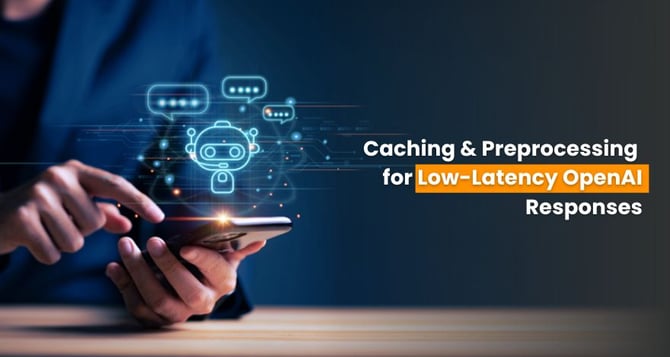Caching and Preprocessing for Low-Latency OpenAI Responses
Learn effective caching and preprocessing techniques in Python to minimize latency in OpenAI responses. Explore methods for response and token-level caching, text normalization, optimized tokenization, batching, and asynchronous processing.

OpenAI's language models, such as GPT-3 and its successors, have opened up exciting possibilities for natural language understanding and generation. However, integrating these models into real-time applications can be challenging due to latency issues. In this article, we will explore the technical aspects of implementing caching and preprocessing strategies in Python to achieve low-latency OpenAI responses, making your applications more responsive and user-friendly, especially in the realm of ChatGPT Development & Integration.
Understanding Latency in OpenAI Responses
Latency, in the context of OpenAI responses, refers to the time it takes from sending a query to receiving the model's response. High latency can disrupt user interactions, especially in real-time applications like chatbots, virtual assistants, and customer support systems. To minimize latency, we need to explore caching and preprocessing techniques.
Caching: Storing Frequently Requested Data
Caching involves storing frequently requested data in temporary storage, such as memory or a dedicated caching system. This allows us to quickly retrieve data when a similar request is made rather than reprocessing it each time.
1. Response Caching
In Python, you can implement response caching using libraries like `cachetools`. Here's an example of how to cache OpenAI responses using a simple dictionary-based cache:
2. Token-Level Caching
You can implement token-level caching by storing tokenized inputs and their corresponding model responses. Here's a simplified example:
3. Cache Invalidation
To ensure that cached responses remain relevant, you can set expiration times for cached items. In Python, you can use the `cachetools` library's `TTLCache` for this purpose.
Preprocessing: Optimizing Input for Speed
Preprocessing involves preparing input data in a way that optimizes model processing time without sacrificing the quality of the response.
1. Text Normalization
In Python, you can use regular expressions and string manipulation functions to normalize user input. Here's a basic example:
2. Tokenization Optimization
Optimize tokenization by splitting text into tokens at specific points, such as sentence boundaries. You can use libraries like spaCy for advanced tokenization:
3. Batching
In Python, you can use libraries like `asyncio` for asynchronous processing and batching. Here's a simplified example of batching OpenAI API requests:
4. Asynchronous Processing
For asynchronous processing, you can use Python's `asyncio` library to offload model processing to a separate, asynchronous service. Here's a basic example:
Considerations
While implementing caching and preprocessing, keep the following considerations in mind:
1. Cache Size: Ensure that the cache size is manageable and fits within the available memory or storage resources.
2. Security: Implement proper security measures to protect cached data, especially if it contains sensitive information.
3. Cold Starts: Be aware of potential "cold start" issues, where cache items need to be generated or loaded into memory when the application starts.
4. Monitoring: Continuously monitor the cache's performance and the impact of preprocessing on response times to make necessary adjustments.
Ready for Swift and Responsive Apps?
Dive into our expertise in Caching and Preprocessing for Low-Latency OpenAI Responses. Transform your app's speed today!
Conclusion
Achieving low-latency OpenAI responses demands expertise, and Signity Solutions is here to help. Our team specializes in implementing caching and preprocessing strategies tailored to your application's unique needs. By optimizing frequently requested data, ensuring secure caching, and utilizing efficient preprocessing techniques, we transform your applications into responsive, user-friendly experiences. Trust us to navigate the intricacies and enhance your users' interactions with OpenAI's language models.













